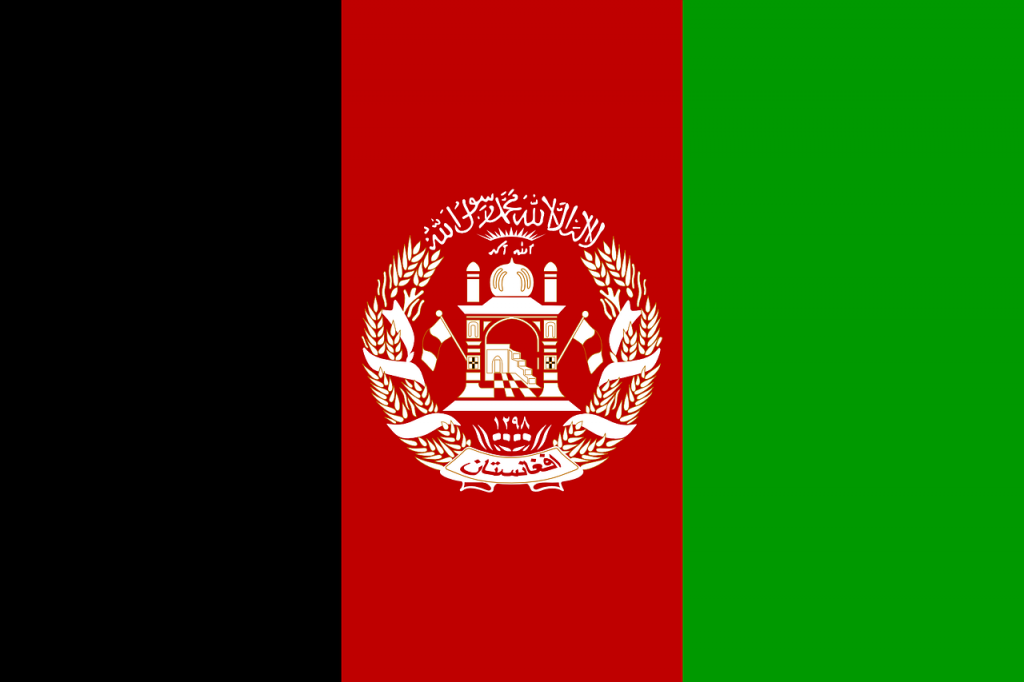The news has been quite depressing lately. The Taliban has retaken control over most of Afghanistan, coming back even stronger and smarter than what they were in 2001. As of the 15th of August, 2021, Kabul has fallen to the Taliban, with its members chanting and celebrating in front of the former US Embassy. With a regime change there will be symbolic change. When I mean symbolic, I’m not just speaking in ideological or historical terms–those certainly are true–I’m speaking in aesthetic terms. What will happen to the flag, and will the official name be changed?
Afghanistan No Longer A Republic
In December of 2001, the Taliban led Emirate was overthrown by the US-led NATO invasion and the Northern Alliance; a coalition of anti-Taliban Afghans that assisted the US-led coalition during Operation Enduring Freedom. International support for the fall of the Taliban-ruled Islamic Emirate from 1996-2001 increased and the supporters of the regime went into hiding and formed an insurgency. Any reference to the previous government was ruled out after 2004. From 2001 to 2021, Afghanistan was officially called the Islamic Republic of Afghanistan. It was one of four Islamic Republic throughout the world, the other three being: Mauritania, Iran, and Pakistan.
So what is an Islamic Republic? An Islamic Republic is often perceived to be a compromise between theocratic monarchists and nationalist republicans. Depending on the country (as the laws and practices differ widely) an Islamic Republic is governed by Islamic Law. Some countries allow voting but only for Islamist parties. It’s a blend of rule-of-law popular sovereignty and traditional Islamic rule according to the Qur’an.
Flag Of The Islamic Republic
Afghanistan has had numerous flags in its history, however the image below is what most people are familiar with.

The old flag (or flag of the exiled government, depending on your view) consists of a black, red, and green tricolor. Black represents its troubled history as a protected state under the British in the 19th century. Red stands for the blood that was shed for independence (yes, we know, a common reference to red on flags). The green is representative of hope and prosperity, along with Islam and natural beauty. Interestingly enough, the tricolor design was inspired by the German flag. It was designed by an Afghan King that visited Europe in 1928.
The centerpiece is the emblem of Afghanistan, which contains a mosque, wheat, and the Afghan flag. In fact, the Afghani flag was one of the only flags in the world to consist of flags of itself on its design.
New Flag And Name? Or Is it?

As you can see above, this is the “new”flag of Afghanistan. It is a plain white flag with the Islamic Shahadah in calligraphy. The Shahadah is the first pillar of Islam, and is the official statement of belief that every Muslim verbally professes. This flag was used during Taliban rule from 1996-2001. So in a way no, this is actually not a new flag.
The name of the Taliban-ruled country is the Islamic Emirate of Afghanistan. With the advent of the return of this theocratic form of government, it would make sense that the vexillology of the national flag would emphasize faith in Islam, rather than national history as the previous flag did. If we examine that word, “Emirate” it implies that Afghanistan will be ruled by an Emir; or a princely ruler. The Emirate will be governed by Shurah councils that interpret Islamic law. The only other nation I know of that contains the word “Emirate” are the United Arab Emirates.
At the moment this article is being written, only four countries officially recognize the new government: Pakistan, Turkmenistan, Saudi Arabia, and the UAE. The United Nations does not officially recognize the legitimacy of the Islamic Emirate of Afghanistan.
The “New” Rulers of Afghanistan
Well, they’re not really new. They were the 90’s rulers of the country. The main difference is that they came back even stronger and smarter this time–with added international legitimacy. Since negotiations have taken place with the Taliban, they are no longer just a rag-tag group of evil-doers as the previous US President George Bush Jr. called them. They are now an equipped and versatile fighting force, using much of the US weapons and tactics that were given and taught to the now defunct Afghan National Army. If anything, the 20-year intervention in the country has only made them stronger.
